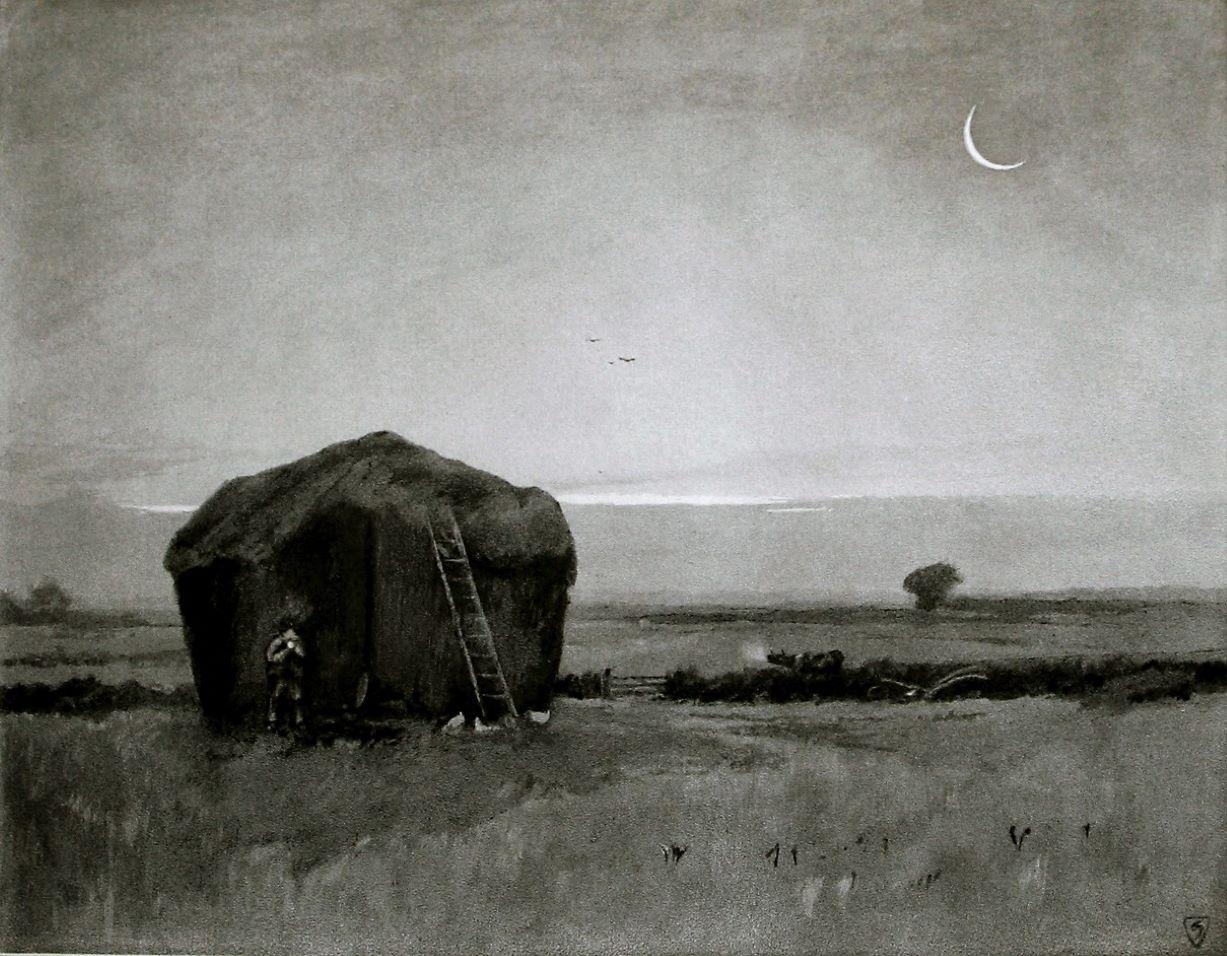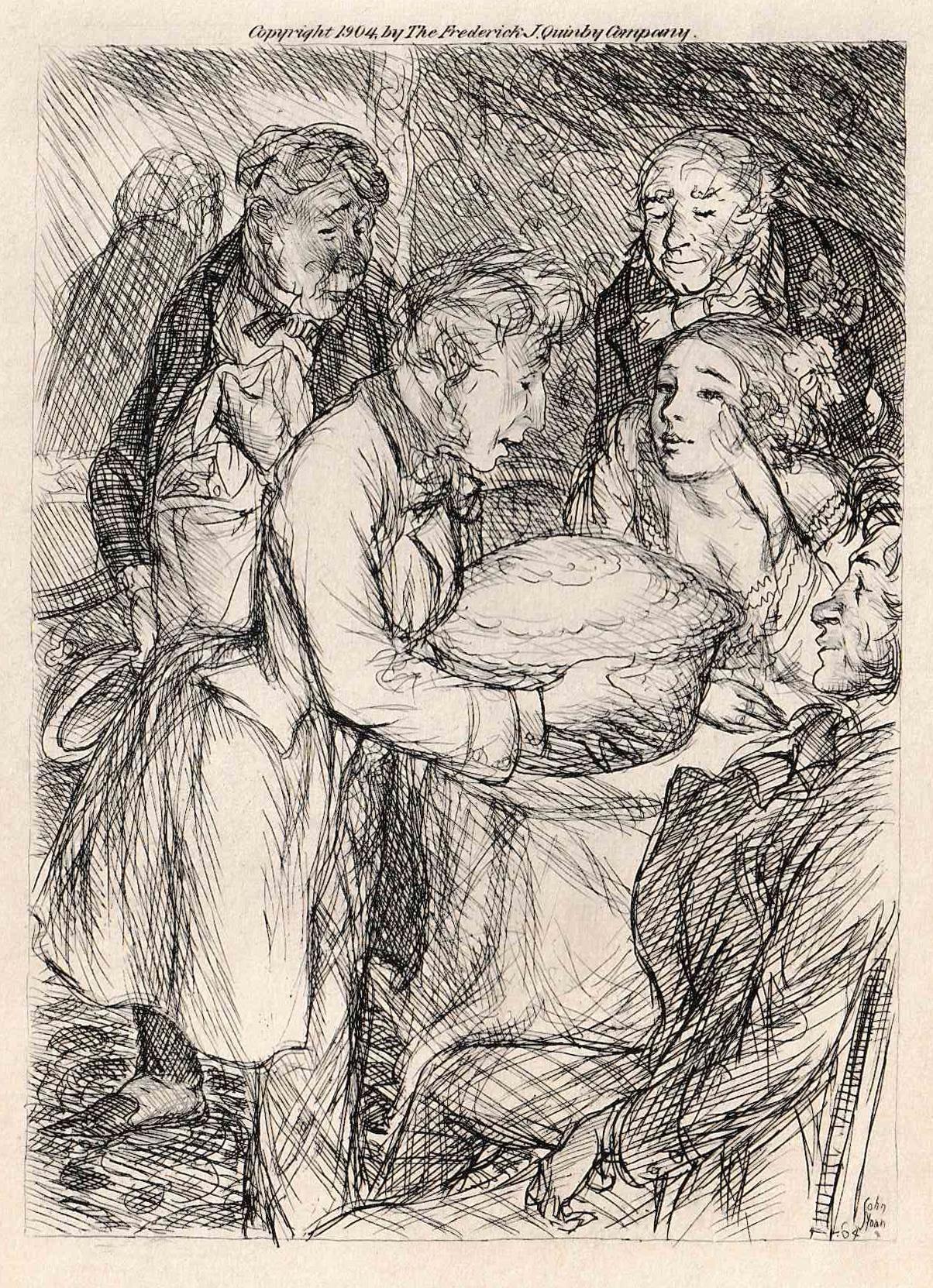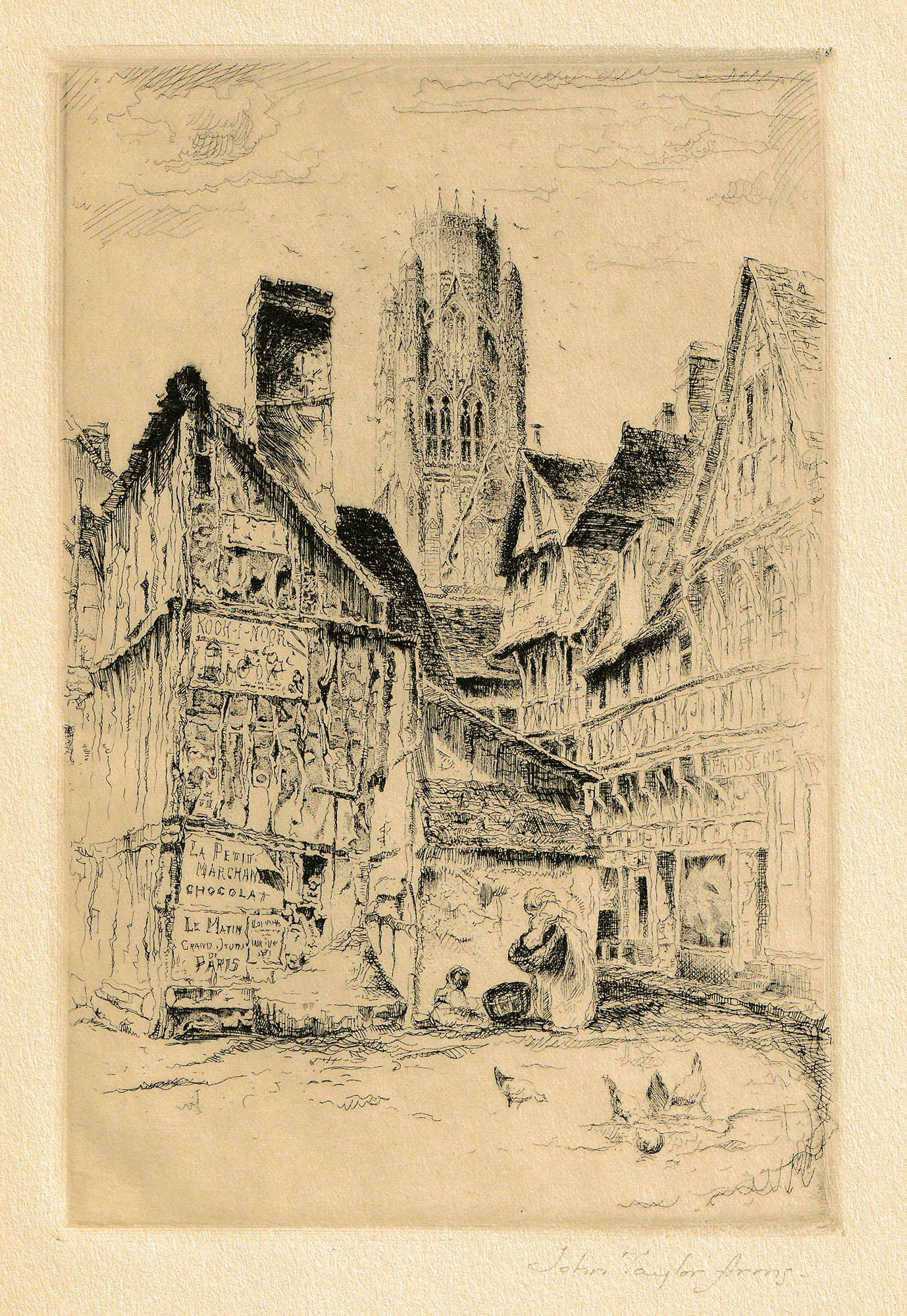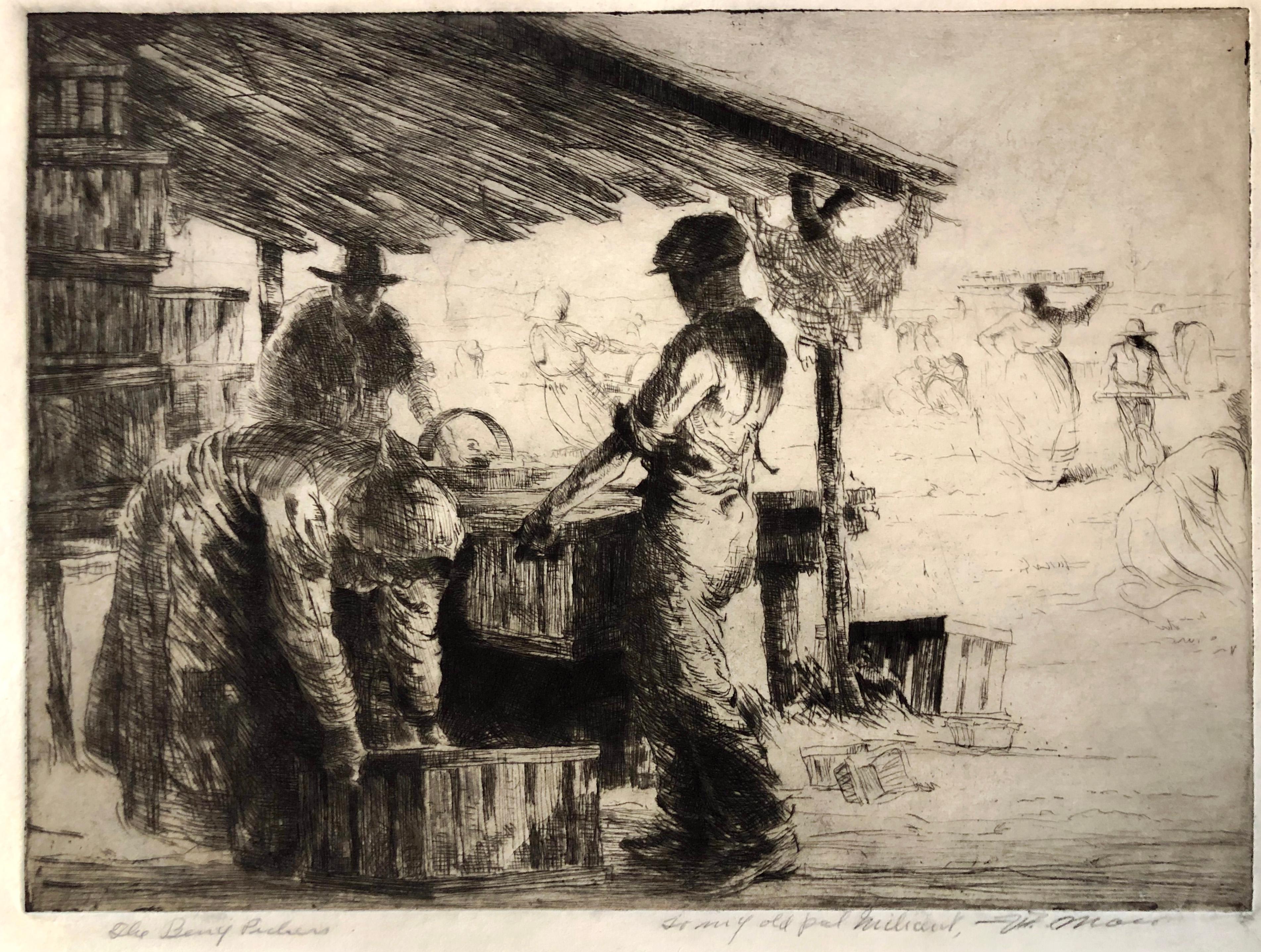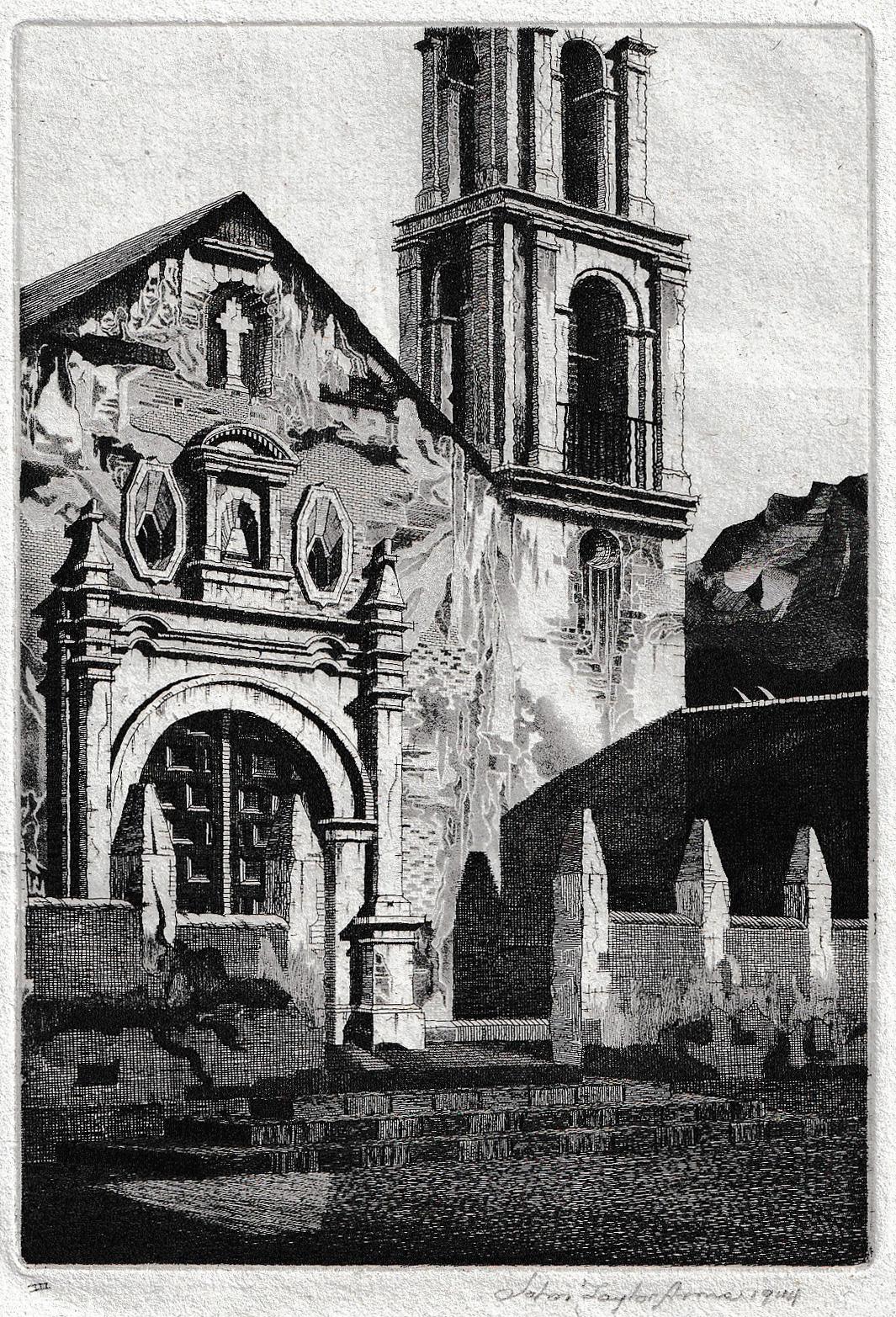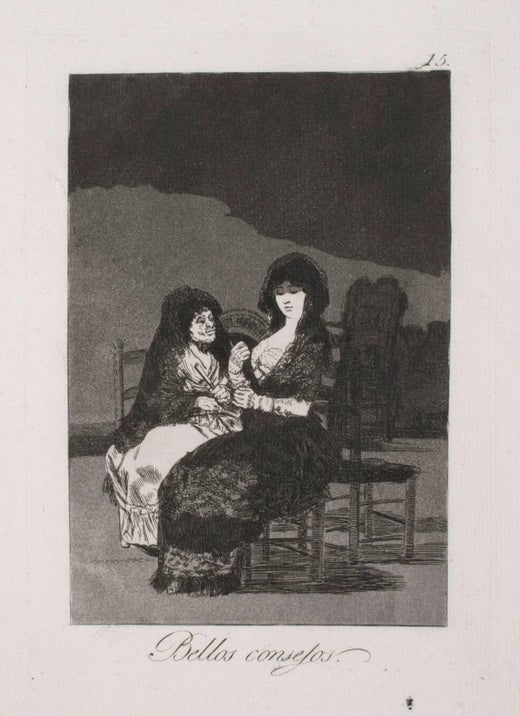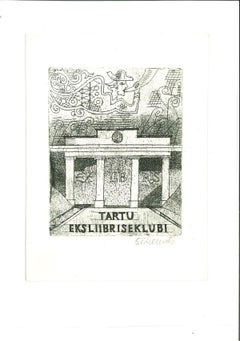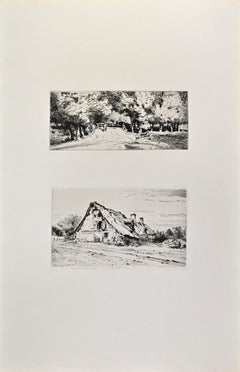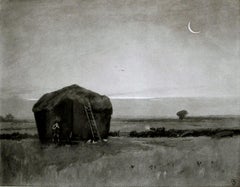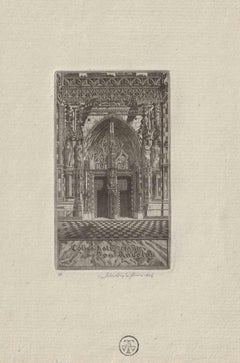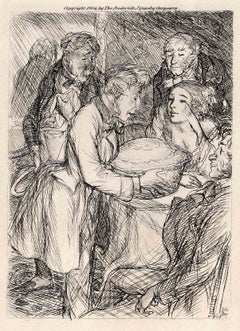Items Similar to Tan Barbara la Seguridad Como el Delito - Etching by Francisco Goya - 1867
Want more images or videos?
Request additional images or videos from the seller
1 of 3
Francisco GoyaTan Barbara la Seguridad Como el Delito - Etching by Francisco Goya - 18671867
1867
About the Item
The custody is as barbarous as the crime (Tan barbara la seguridad como el delito) is an artwork realied by Francisco Goya y Lucientes, 1867.
Paris: Delâtre, 1867.
Etching and burin.
cm. 10.5x8.4.Sheet 21x16.2.
Excellent proof of III state and first edition after the appearance of the letter and the bevel of the plate, published in the Gazette des Beau-Arts, vol. XXII, p. 196.
Ref. Harris 26
Intact sheet with wide margins. Slight exposure yellowing around image.
Francisco José de Goya y Lucientes (Fuendetodos, March 30, 1746 - Bordeaux, April 16, 1828) was a Spanish painter and engraver. Considered the pioneer of modern art, he was one of the greatest Spanish painters who lived between the late eighteenth and early nineteenth centuries. His paintings, drawings and etchings of him reflected the ongoing historical upheavals and influenced the most important contemporary and following century painters. Goya is often referred to as the last of the old masters and the first of the moderns. Born into a middle-class family in 1746 in Aragon, he was a pupil of painting from the age of 14 to José Luzán y Martínez, later moving to Madrid to study with Anton Raphael Mengs. In 1786 he became court painter to the Spanish crown and this first part of his career was characterized by numerous portraits of members of the Spanish aristocracy and royal family, as well as by the production of rococo tapestries for the royal palace.
In 1793 he suffered from an undiagnosed serious illness which left him deaf, after which his work became progressively darker and more pessimistic. His subsequent paintings seem to reflect a bleak vision of existence, which contrasts with his resounding social ascent: in 1799, in fact, he became Primer Pintor de Cámara (First Court Painter), the highest rank for a Spanish court painter . In late 1799, commissioned by Godoy, he completed his Maja desnuda, a remarkably bold nude for the time and clearly inspired by the style of Diego Velázquez. In the early 19th century he painted The Family of Charles IV, again influenced by Velázquez. In 1807, Napoleon led the Grand Army in the Peninsular War against Spain. During the conflict Goya remained in Madrid and, although he never expressed his thoughts in public, it seems that these facts affected him deeply, as can be seen from some of his works such as The Disasters of War, The 2nd of May 1808, The 3rd May 1808. Other works of his maturity include a wide variety of paintings concerning madness, asylums, witches, fantastic creatures, and religious and political corruption, which suggest that he feared for his mental and physical health. His later period culminates with the Black Paintings of 1819-1823, made in the Quinta del Sordo, his home on the outskirts of Madrid where he lived, disillusioned by political and social developments in Spain, in a situation of almost isolation. Finally, in 1824, Goya decided to abandon Spain to retire to the French city of Bordeaux where he completed his series La Tauromaquia and a number of other important canvases. Towards the end of his life a stroke left him paralyzed on his right side. He died and was buried on April 16, 1828 at the age of 82. His body was later transferred to the Church of San Antonio de Florida in Madrid.
- Creator:Francisco Goya (1746 - 1928, Spanish)
- Creation Year:1867
- Dimensions:Height: 8.27 in (21 cm)Width: 6.38 in (16.2 cm)Depth: 0.04 in (1 mm)
- Medium:
- Movement & Style:
- Period:
- Framing:Framing Options Available
- Condition:Insurance may be requested by customers as additional service, contact us for more information.
- Gallery Location:Roma, IT
- Reference Number:Seller: T-1405171stDibs: LU650312632002
Francisco Goya
Francisco José de Goya y Lucientes (1746-1828) was a Spanish romantic painter and printmaker. He is considered the most important Spanish artist of the late 18th and early 19th centuries. His works often contained a social message, like in his "Disasters of War" series. Immensely successful in his lifetime, Goya is often referred to as both the last of the Old Masters and the first of the moderns. He was also one of the great portraitists of his time.
About the Seller
4.9
Platinum Seller
Premium sellers with a 4.7+ rating and 24-hour response times
1stDibs seller since 2017
7,496 sales on 1stDibs
Typical response time: 2 hours
- ShippingRetrieving quote...Shipping from: Grasse, France
- Return Policy
Authenticity Guarantee
In the unlikely event there’s an issue with an item’s authenticity, contact us within 1 year for a full refund. DetailsMoney-Back Guarantee
If your item is not as described, is damaged in transit, or does not arrive, contact us within 7 days for a full refund. Details24-Hour Cancellation
You have a 24-hour grace period in which to reconsider your purchase, with no questions asked.Vetted Professional Sellers
Our world-class sellers must adhere to strict standards for service and quality, maintaining the integrity of our listings.Price-Match Guarantee
If you find that a seller listed the same item for a lower price elsewhere, we’ll match it.Trusted Global Delivery
Our best-in-class carrier network provides specialized shipping options worldwide, including custom delivery.More From This Seller
View AllEx Libris Eklubi - Original Etching - Mid-20th Century
Located in Roma, IT
Ex Libris Eklubi is an original Contemporary Artwork realized in the 20th Century.
Original Ex Libris.
Original B/W Etching on ivory-colored paper. Hand-signed in pencil on the lo...
Category
Mid-20th Century Modern Figurative Prints
Materials
Etching
L'Elevèment - Etching by Dominique Félix - 1870s
Located in Roma, IT
L'Elevèment is an artwork realized by D. Félix in 1870s.
Etching.
Good conditions.
Realized for the "Société des Aquafortistes. Born on the initiative of the publisher Alfred Ca...
Category
1870s Modern Figurative Prints
Materials
Etching
Le Petit Branconnier - Etching by Jacques-Joseph Lecurieux - 1870s
Located in Roma, IT
Le Petit Branconnier is an artwork realized by Jacques-Joseph Lecurieux in the 1870s.
Etching.
Good conditions.
Realized for the "Société des Aquafortistes. Born on the initiativ...
Category
1870s Modern Figurative Prints
Materials
Etching
A Nohant-Vico - Etching by Joseph François Villevieille - 1870s
Located in Roma, IT
A Nohant-Vico is an artwork realized by Joseph François Villevieille in the 1870s.
Etching.
Good conditions.
Realized for the "Société des Aquafortistes. Born on the initiative of...
Category
1870s Modern Figurative Prints
Materials
Etching
La chasse du Beau Pécopin - Etching by Charles Amédée De Boret - 1870s
Located in Roma, IT
La chasse du Beau Pécopin is an artwork realized by Charles Amédée De Boret in the 1870s.
Etching.
Good conditions.
Realized for the "Société des Aquafortistes. Born on the initia...
Category
1870s Modern Figurative Prints
Materials
Etching
Un Forgeron - Etching by Eugène Delacroix - 1870s
By Eugène Delacroix
Located in Roma, IT
Un Forgeron is an artwork realized by Eugène Delacroix in the 1870s.
Etching.
Good conditions.
Realized for the "Société des Aquafortistes. Born on the initiative of the publisher...
Category
1870s Modern Figurative Prints
Materials
Etching
You May Also Like
Twixt Dawn and Day
By Sir Frank Short
Located in Storrs, CT
Twixt Day and Dawn. 1919. Aquatint. Hardie catalog 165 state ii. Image 9 7/8 x 11 1/2 (sheet 13 9/16 x 16 7/8). A masterly inked impression produces subtle lighting variations throu...
Category
Early 20th Century Modern Landscape Prints
Materials
Aquatint
$500 Sale Price
39% Off
Eglise Notre Dame, Les Andelys
By John Taylor Arms
Located in Middletown, NY
Etching and drypoint on greenish cream wove paper, 3 1/4 x 1 15/16 inches (81 x 48 mm), full margins. Signed, dated, and inscribed "III" in pencil. Number 46 from the French Churche...
Category
Mid-20th Century American Modern Figurative Prints
Materials
Handmade Paper, Etching
The Silent Pie
By John Sloan
Located in Middletown, NY
Boston: Frederick J. Quinby Company, 1904.
Etching on cream wove paper, 5 3/8 x 4 1/4 inches (135 x 107 mm), signed in the plate, lower right. Third state (of 3), from the novel The ...
Category
Early 20th Century American Modern Figurative Prints
Materials
Etching
Old Corner, Rouen
By John Taylor Arms
Located in Middletown, NY
Etching on cream wove paper, 6 x 4 inches (153 x 102 mm), full margins. Signed in pencil, lower margin. From the edition of 150, printed by Frederick Reynolds.
[Fletcher 163]
This ...
Category
Early 20th Century American Modern Figurative Prints
Materials
Handmade Paper, Etching
The Berry Pickers
Located in Middletown, NY
Drypoint etching on cream laid paper with an oak leaf watermark, c 1935. 7 1/4 x 9 3/4 inches (183 x 241 mm), full margins. Signed, titled and inscribed in pencil, lower margin. A b...
Category
Mid-20th Century American Modern Figurative Prints
Materials
Laid Paper, Drypoint, Etching
Shadows in Mexico
By John Taylor Arms
Located in Middletown, NY
Etching on bluish-grey, antique laid paper, 5 x 3 5/8 inches (127 x 93 mm), signed, dated, and inscribed "III" in pencil, lower margin. A proof impression from the third state (of 3)...
Category
Mid-20th Century American Modern Landscape Prints
Materials
Laid Paper, Etching
